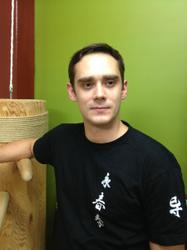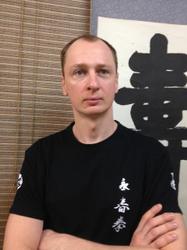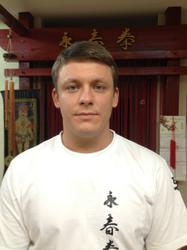Kung Fu, Part 2
METHODS OF TEACHING THE HARD FORM KUNG FU
This begins with ones own elaboration and working through special moves. The study of static and dynamic moves will follow. You then repeat the sequence of moves (as with kihon’ in karate). The aim is to achieve an automatic reflex (almost mechanisation) of your muscle coordination. Other aims involve achieving precision and strength in moves and developing specific stances, which are necessary for these types of moves.
WORKING WITH A PARTNER
The application of attack and defence skills of different levels of complexity (strike by strike) in conventional combat. This combat can be performed against one or several opponents or in a free fight’ situation called konsao’.
TAO SKILL
The number of skills in karate and kata are completely uncountable due to the large number of styles between both. To this number you can add the sheer diversity of personal interpretations by specialists not to mention representatives of the same school. One Taoist display shows a common situation when one has to fight against several opponents in different conditions. Taoism is part of the aesthetic Kung-Fu movements, which differ depending on the school in question. In the future, maybe someone with outstanding organisational talent will succeed in unifying the various Kung Fu styles.
A STRIKE MADE WITH THE RIGHT SKILL IS INVISIBLE.
AN OPPONENT SHOULD BE DEFEATED WITHOUT HIM SEEING YOUR HANDS.
TO MASTER THE ART OF COMBAT YOU SHOULD LEARN ITS PHILOSOPHY.
IT IS IMPOSSIBLE WITHOUT THE MIND.
Your thoughts should not be concentrated on only one move’. You should not be fully occupied by every move. Practising Kung-Fu demands that you are author and executor at the same time. You are the executor of your own I’, voluntarily being absorbed by your own body. You should become removed’ from the environment in order to become more receptive to strong internal signals which are managing the body.
PHILOSOPHICAL ROOTS
The human is Universe! The most important thing in a person’s life is to maintain cosmic order. A human is a microcosmos’. He is merely a continuation of the Universe and the macrocosmos. His life’s internal energy (only a part of Universe), when floated freely, allows external cosmos energy to flow through him.
TRANQUILITY
Avoid additional worries. The truth is here, close to the human's heart. A sense of all things in perfect tranquillity and moderation. One should live in harmony with nature's way. From this derives the principles of the internal Vu way style (peace), Vano (free oneself) and Tsuyan (effectivness and spontaniety).
Everything should be in balance like YIN and YAN.
Positive elements (known as masculine tones) include: life, sky, sun, day. Hardness, toughness are characterised by: death, earth, moon, night. These balances, however, are in constant motion. The truth, therefore, lies somewhere between them. This fundamental philosophical state is represented by the famous symbol of Tai Chi.
So, from one small martial arts course, let us turn to a more substantial one: the study of the Vu way.
Instead of striking with your hands or feet, you must first of all summon Chi breathing, which circulates and transfers through the blood. It is the foundation of courage and strength.
When the tip of your tongue reaches the roof of your mouth, Chi breath becomes healthy. When Chi breath directs itself to the cinnobaric field, the Spirit (Cshen) becomes strong. Exhalation should reach Yun Quan (the centre of the foot) and reach up to Kun-Lun (the crown of the head).
Following these Chinese expressions, all martial arts’ strength is essentially derived from applying the correct Chi breathing and precise direction of external energy. This is achieved by tightening the muscles and then relaxing them during blocking moves or strikes. To learn this we have to learn how to breathe correctly. We have to learn to feel’ Chi energy movements along the big and small circles’, to learn to fill the Cinnobar Field (Tan-Tien) with Chi energy and thrust it into the foot or hand.
Breathing gymnastics’ involves six types of breath. These represent the six stages of mastering breathing:
- Natural breathing.
- YIN and YAN substances circulation (minor turn of the sky cycle)
- YIN and YAN substances circulation (greater turn of the sky cycle)
- Control and regularity of SI-TYAO breathing.
- Throat breathing HOU-SHOU HU-SI.
- Internal breathing.
The first stage is natural breathing: During this type of breathing the following occurs: between the nose and lips there is a small depression called the philtron. The upper and lower teeth make contact with each other. The tip of the tongue touches the base of lower teeth. During this breath, the rib cage expands. When exhaling, the mouth smoothly closes and the tongue drops to the floor of the mouth. Simultaneously, the stomach tucks up. This breathing technique should be trained for 30 minutes every day. But one should start with three to five minute sessions, then moving on to ten minutes and finally thirty minutes.
The other stages of breathing also demand half an hour practice per day. After thirty daily classes, the result one sees is an increase in strength, better spirits and an increase in lung capacity.
The second stage is called YIN and YAN substance circulation’, also known as the minor sky cycle. According to QUGONG theory, the front part of the human's organism is related to the YIN substance. The back corresponds to YAN. If YIN and YAN substances are enveloped by one sky cycle, this means that the Chi breath may increase, circulating in the upper body part, but not reaching the lower part of the organism. This is why this cycle is called a minor sky cycle.
YIN and YAN substance circulation along the minor sky cycle is called inhaling and exhaling in reverse’. This can be explained because, in this case, expansion and contraction are the opposite in relation to the first stage of natural breathing. We recall that, during the natural breathing stage inhaling involves the stomach tucking up. The breath is made through the nose. To manage breathing circulation of Chi breath, however, it is necessary to breathe with the mind. This directs the breathing into the upper body part, i.e. the mind controls Chi breath.
When exhaling, your mind envisages Chi breath moving from the crown of your head through the chest towards the Cinnobar Field area. Whilst inhaling you should imagine Chi breath moving from the Cinnobar Field right up through the tail bone (coccyx), then through the spine, all the way up to the brain. During inhaling you should draw in your backside.
If you are standing in a martial position, then, during inhaling you should curl in your toes, as if to grab the earth. This raises Chi breath. You should exercise this way for 90 days. As a result of these exercises, problems with lungs, bowel, heart, blood pressure and others may be cured.
The third stage is called YIN and YAN circulation along the big cycle. It is called this way as the breath spreads to the lower body part. As the one doing the training has already mastered two methods, and has learned to breathe deeper and fuller, the Chi circulation may now be spread to the whole body. During exhaling the breath exits through the mouth. Conversely, inhaling is achieved through the nose. During exhaling, the rib cage expands and, at this moment, you should imagine Chi breath descending from the head crown through the chest and Cinnobar Field into the centre of the feet, where the YUN-QUAN point is located (or spring point). During inhaling phases, in it is necessary to tighten your toes, as described already. This training should last 180 days. The effect is the same as at the second stage, but with the addition of a strengthened nervous system.
The fourth stage is called the control of SI-TYAO breathing frequency. It is also a type of natural breathing.
It is called natural as there happens to be a consequential expansion and contraction of the rib cage. The inhaling and exhaling is deeper and longer when compared to the first one. The fourth stage lasts for 60 days and facilitates harmonious development of the abdonomal cavity and fights bowel deseases.
The fifth stage is called the throat breath. It is also called the intense deep breath’. The throat must expand to its maximum extent. This enlargment helps to intensify and deepen inhaling and exhaling. Why are songwords heard so well? Well, this is because the throat is fully open during singing. The expansion and contraction of the rib cage occurs in the same way as in stages two and three. Chi movement must circulate through the whole body. This exercise should be repeated for 90 days. It fortifies the internal body organs.
The sixth stage is called the internal breath. Here, breathe in through your nose. Your stomach tucks up but it expands when exhaling. Why is it called internal? Because, during inhaling, the breathing sound’ cannot be heard, not even by the person breathing! During inhaling, Chi moves down from the head crown into the Cinnobar Field and lower. This exercise lasts 300 days.
When developing these ways of breathing, you should not forget that the muscle system of your hands and feet should also be developing. This makes up a vital part of martial arts training. After mastering the correct breathing and Chi energy circulation along the minor and major cycles, one should learn how to throw the energy out through your hands and feet. To make an irresistable energy blow called the YAN black strike.
TRANQUILITY, MEDITATON
Tranquility is in the depths of the heart, which only conveys the image of a single whole. Ten thousands things find their way into this depth’, like stones plunging to the bottom of the sea.
During relaxation your muscles are light like quick-sand in which your blood (following Chi breath) smoothly sink. Breathing in and out should be deep, long, thorough and balanced, so that breaths are equal in length.
MIND REGULATION
Chi breath should connect to Li strength, the brain should keep unity with the heart, the heart should connect to the mind and the mind should manage the breath!
Chi breath fortifies Li strength. Strength is the motor for Chi breath. By breathing, an effort is made and this effort should reach the eyes and sight.
Motion should be carried out smoothly and gradually. Sudden and hasty motions don’t lend themselves to achieving success.
UNITY OF BREATHING IN AND OUT
The body moves like a rolling wave, and the hands shoot out like the waves crashing forth. When a strike is being performed, even the shadow can't be seen! You should defend and attack quickly. So the great secret of motion art is in the unity of inhaling and exhaling. TSZUN-TSI (main breath).
If you exercise long and persistently, then your strength, like the wave, may break a mountain.
CINNOBAR FIELD
The Cinnobar Field is the foundation of breathing exercises. The strength emanating from the Cinnobar Field is equal to a tiger's strength. All one hundred of the human’s body joints move together. The combined efforts of these movements errupt like a volcano. Chi energy penetrates into all of the joints of the organism. It strikes with the power of thunder and the speed of lightening.
When TSZUN-TSI main breath is guarding VEY-TSI breath and the original YUAN-TSI breath of the whole organism are concentrated in the TAN-TIEN Cinnobar Field, the organism is then able to bring crushing power to bear on the opponent. The best time to concentrate on Cinnabar Field training is when the sun is rising (from five to seven o' clock a.m.). Other suitable times are from nine to ten in the morning; then in the afternoon from two to three; and then in the evening from nine till eleven. In the beginning it is best to exersice for ten to thirty minutes at a time. Only then, after a year, can you spend 30 to 60 minutes at a session.
EXCEPTIONS
Exercises are not advised after or during serious illness, when experiencing high temperature or when suffering serous hypertonia, serious heart desease, during acute tuberculosis attack, women's menstruation, or in cases of extreme body exhaustion.



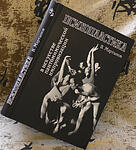

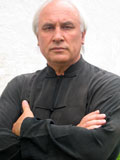 Коан – вопрос к членам Федерации Юн Чун Цюань от президента В.В. Мартынова: «Что Вы сделали для Федерации из того, что не мог бы сделать любой другой за деньги?»
Коан – вопрос к членам Федерации Юн Чун Цюань от президента В.В. Мартынова: «Что Вы сделали для Федерации из того, что не мог бы сделать любой другой за деньги?»
